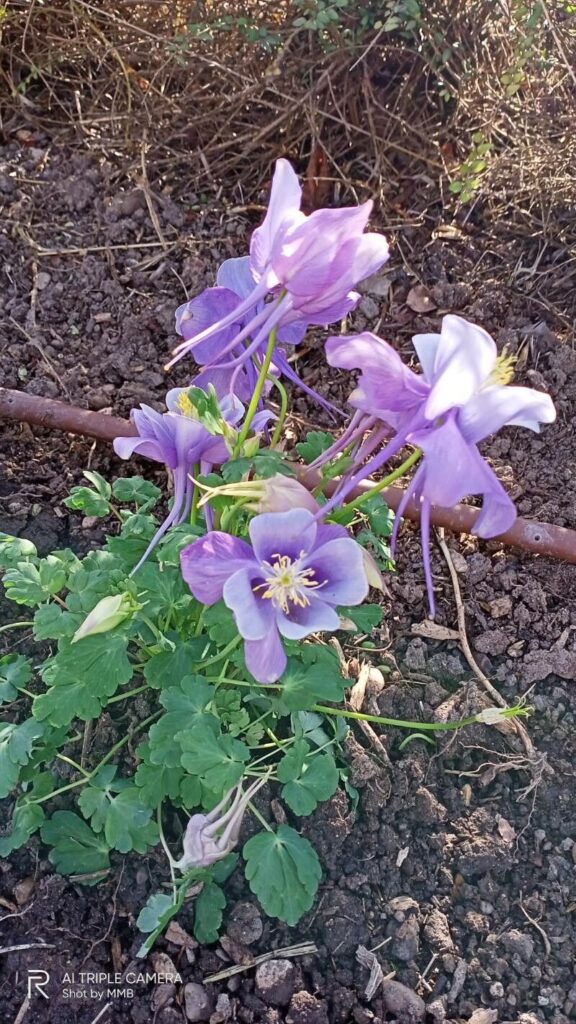Propagating Aquilegia bernardii: A Gardener’s Challenge
Aquilegia bernardii, often called Bernard’s Columbine, is a stunning alpine species captivating gardeners with its delicate, spurred blooms and unique bluish-purple to violet flowers. Native to the Pyrenees Mountains, its compact growth habit and hardiness make it a desirable addition to rock gardens and alpine troughs. However, its propagation presents certain challenges, making successful cultivation all the more rewarding. This article explores various methods for propagating Aquilegia bernardii, analyzing their viability and offering practical advice.
Seed Germination:
Seed germination is a viable, albeit challenging, method for propagating Aquilegia bernardii. The primary challenge lies in the seeds’ need for stratification – a period of cold, moist treatment mimicking winter conditions. This process breaks seed dormancy.
Challenges: Low germination rates are common even with proper stratification. Seeds require precise conditions to sprout, and fungal diseases can easily affect delicate seedlings.
Practical Tips: Sow seeds in autumn outdoors in a well-drained seed tray containing a gritty seed-starting mix. Alternatively, stratify seeds in the refrigerator for 6-8 weeks at near-freezing temperatures (around 3-4°C) before sowing in spring. Maintain consistently moist but not waterlogged conditions, and provide good ventilation to prevent fungal growth.
Rewards: Seed propagation offers the greatest genetic diversity, allowing for variations in flower colour and form within the offspring, and potentially contributing to the conservation of this rare species. It also allows for large-scale propagation given patience and proper technique.
Cuttings:
Currently, there are no known reliable methods for propagation of Aquilegia bernardii from cuttings. This species is notoriously difficult to propagate vegetatively.
Division:
Division is another challenging method for propagating Aquilegia bernardii. The plant’s relatively small size and delicate root system make successful division difficult without causing significant damage.
Challenges: Dividing the plant is prone to causing root disruption and subsequent plant death. The small size of the plant means few divisions are practically possible.
Practical Tips: Division should ideally be attempted during the dormant season (autumn or early spring). Carefully lift the entire plant, and gently try to separate small clumps with their own root systems, ensuring each division has healthy roots and ample foliage. Replant immediately in a well-drained, suitable environment.
Rewards: Division offers a faster propagation method compared to seed if successful, resulting in quicker establishment of new plants. However, limited success rate makes this approach unreliable.
Tissue Culture:
Tissue culture offers the potential for large-scale propagation of Aquilegia bernardii, but this method requires specialized equipment and expertise. It’s not a practical method for the home gardener.
Challenges: Establishing sterile conditions, selecting suitable media, and achieving successful shoot multiplication and rooting require considerable technical skill and laboratory facilities.
Practical Tips: This propagation method should only be considered by professionals with expertise in plant tissue culture.
Rewards: Tissue culture can produce a large number of genetically identical plantlets, which permits the multiplication of superior specimens or rare genotypes. This approach though is expensive and may not be easily accessible.
Conclusion:
Propagating Aquilegia bernardii presents significant challenges regardless of the chosen method. While seed germination offers the most reliable route to multiplication, it requires patience, precision, and a keen understanding of the plant’s needs. Division offers a potentially faster approach, but the success rate is low. Cuttings and tissue culture are currently impractical for the average gardener. However, the unique beauty and relative rarity of Aquilegia bernardii make the effort worthwhile. The satisfaction of nurturing a seedling from seed, or successfully establishing a division, far outweighs the difficulties involved. For aspiring propagators of this challenging species, patience and careful attention to detail are crucial elements of success. Remember to start with a healthy mother plant and select the propagation method most suitable to your resources and skill level. Persistence and observation will lead to rewarding results.
